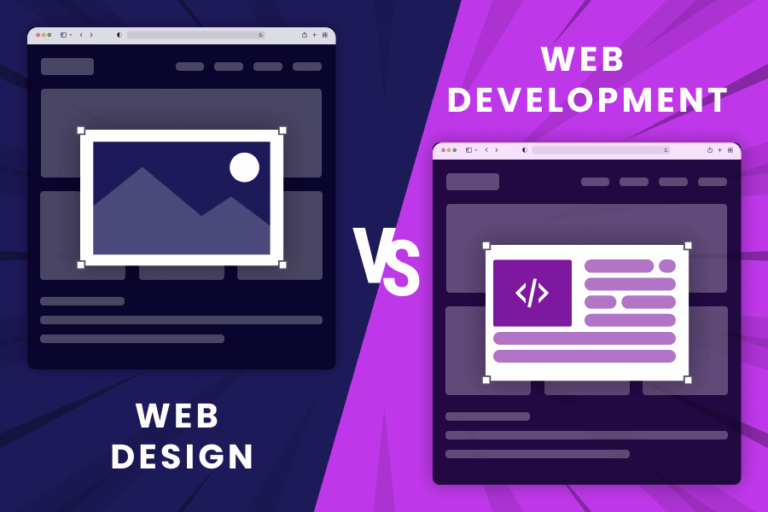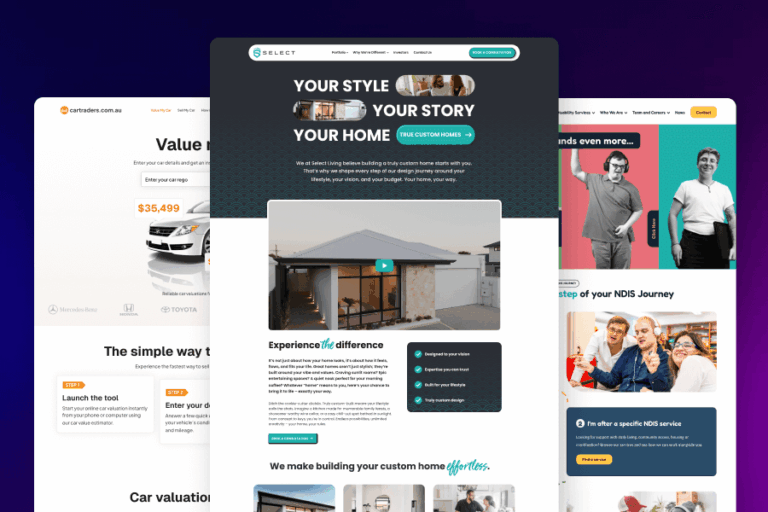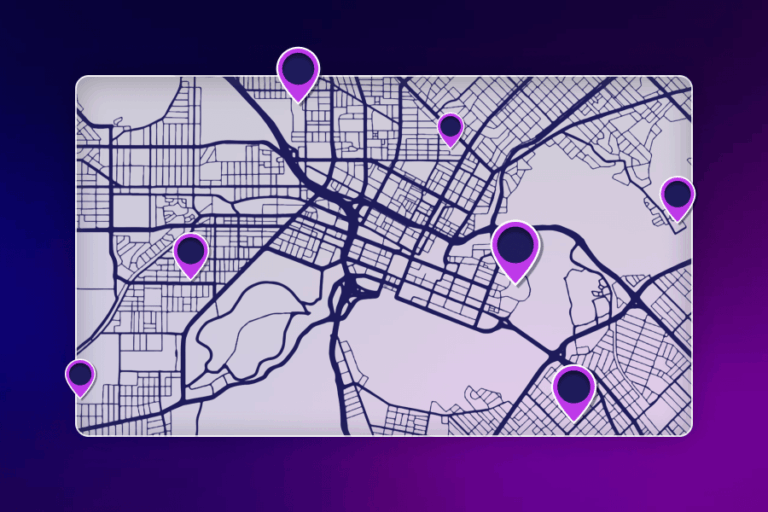More than just a digital address, a website is a collection of documents that tells a story of an organisation, be it priorities, technology adoption or even its relationship with its audience. Take the City of Perth website, for example. If you trace back its archives, you will notice the significant transformation from an online noticeboard to the sophisticated functional platform it is today. More than just a history lesson, this demonstrates the importance of continuous adaptation and strategic investment of your digital presence.
What This Implies for Companies in Perth
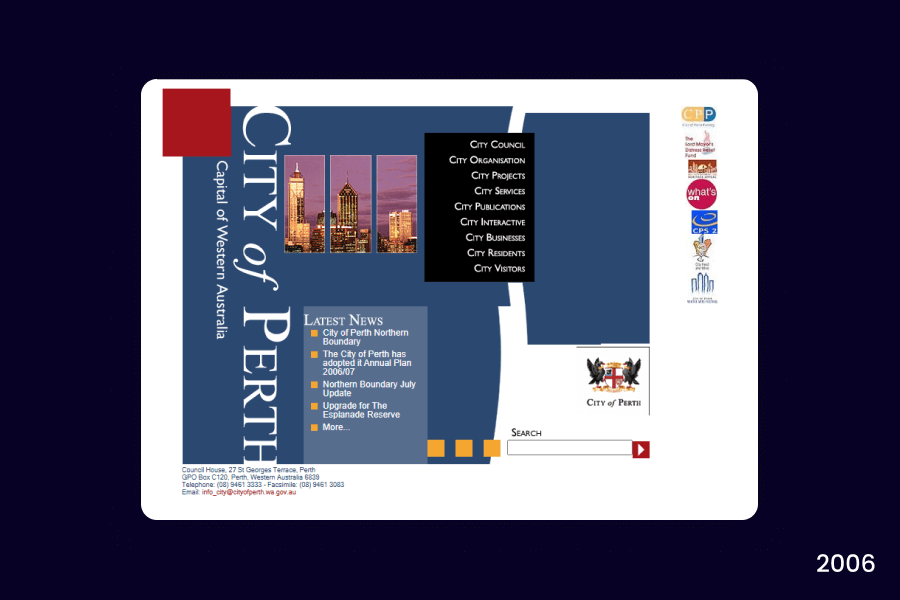
The City of Perth’s web history is an example of how quickly technology and habits evolve. With the majority of early websites being not a lot more than just text and links, people now anticipate and expect easy-to-follow instructions, prompt responses, and the ability to complete tasks online. A website from the turn of the century is no longer up to par today. Understanding this trajectory is important for a business to succeed in WA. A website is never “finished”, and it must evolve to meet your customers’ expectations and demands.
How the Website Evolved
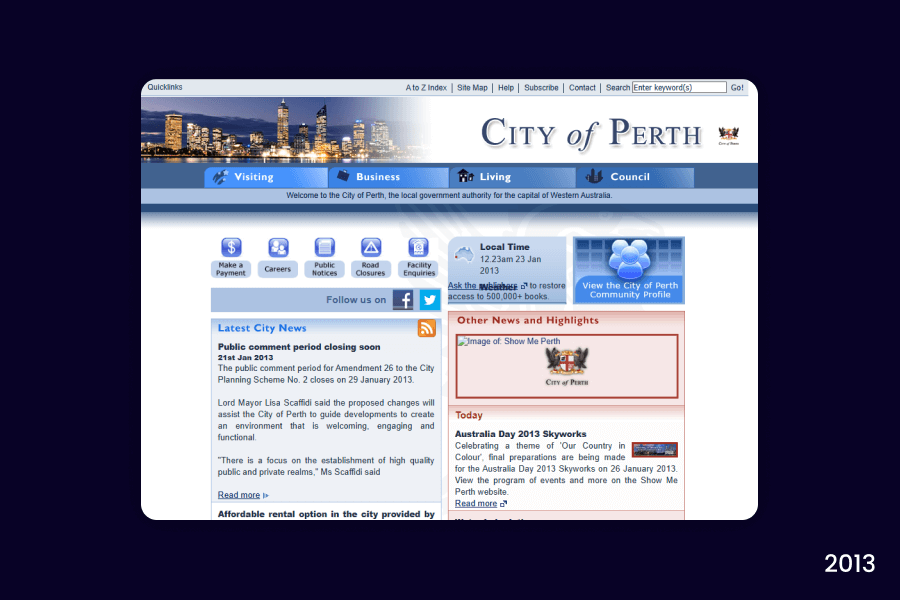
The website for the City of Perth has undergone four major eras, each of which reflected the technology at the time and the preferences of users.
-
The period from 1999 to 2003 known as “Digital Brochure”
Without a lot of thought to user experience the website during this era consisted primarily of plain text and fixed tables. The content was relatively shallow, acting more like an online brochure with links to other departments and services. The objective was simply to have an online presence in the emerging environment of the World Wide Web.
-
Developing a brand and structure, 2006–2009
This period was when true brand identity started to appear online with the site design becoming more graphics heavy. Stronger logos and colours helped provide a higher level of distinction for the brand. Drop-down menus emerged as the amount of content increased and the site needed an underlying architecture to support it. Adoption of a Content Management System allowed users and administrators to organise and update information more efficiently.
-
Mobile-friendly and user-first, 2012–2018
This era was the pivotal moment. The emergence of task-based navigation clearly moved to a user-first goal. Designs became user-friendly, with cleaner and wider designs, and “responsive,” adapting seamlessly to the increased usage of tablets and mobile devices. More than just a redesign; it was a period where websites were re-architecting to users’ needs. This user first approach is a core principle of Perth Website Design.
-
From 2020 to the present, the modern service platform
Today, the website is more than just a brochure, it provides core services assisting both locals and tourists.
Designed to be active. Make a bill payment. Look for an occasion. Submit a permit application. Clear pathways and high-quality images facilitate speedy task completion.
With online services forming a critical new way of doing business with Perth Council it was essential to focus on accessibility – making these new features available to all.
Business Lessons From Two Decades of Digital Revolution
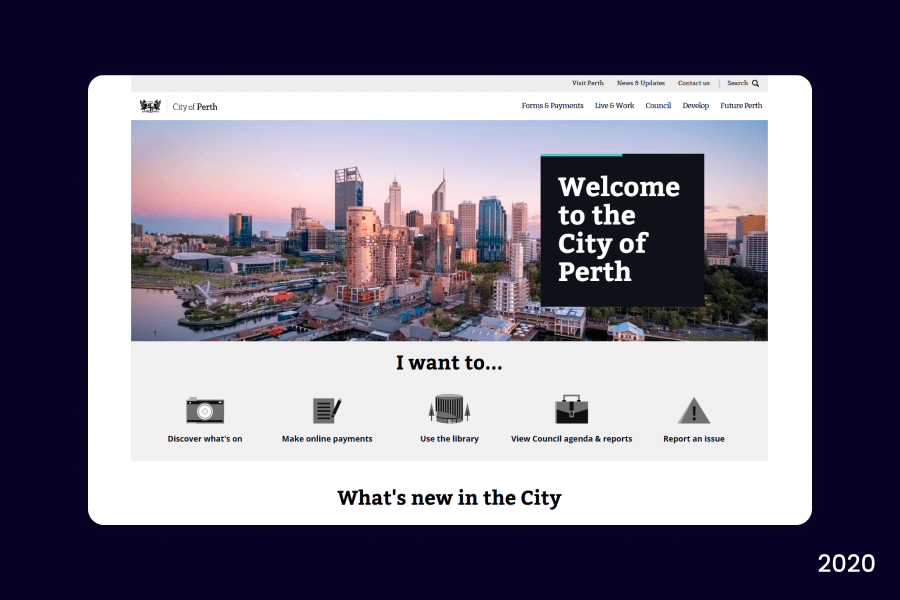
For any business managing a website, this presents timeless, powerful lessons.
- The trust factor. An outdated design gives the impression that your company is out of date. A business’s professionalism and credibility are represented in its visuals. Failure to invest in modern design, is a failure to your brand’s reputation.
- Possibilities from technology. The leap from early HTML to a CMS and mobile-friendly builds, then to mobile-first, presented new capabilities. The level in which you serve your customers online, is enabled by your technology stack.
- User-experience, a moving target. A website user’s needs are constantly changing. It is imperative for a successful website to be continuously researched, tested, and refined to remain evolved, and relevant.
Your Organisation’s Website is a Journey, Not a Destination
The City of Perth’s website is a classic example of web evolution. What started off as a static website is now transformed into a new digital frontier, evolving into a vital piece of the city’s infrastructure. Its story is the ultimate proof that more than being a one-time project, an effective digital presence is a continuous process of investment, adaptation and strategic alignment with your audience’s needs.
Is your website stuck in the past? Schedule an obligation-free consultation with our strategists to bring it to the modern age.
